
What Type Of Leather Is The Best For Leather Bags?
When it comes to buying a leather bag, you will never fall short of options. They are available in a variety of leather online or in physical nearby stores. With the availability of so many options, you tend to get confused when shopping.
Thus, you should check the quality of the leather when shopping for a bag to make a lucrative investment. Unfortunately, some of the bags may look good but are of poor-quality leather.
Keep in mind that the leather quality depends on these 4 things.
-
The animal hide used to make a bag.
Leather is made from animal hides and treated to make durable products suited for a wide variety of uses. Thus, you should always check the type of animal hide if you want to buy durable bags.
-
Grain of leather used to make a bag.
The bag you buy and carry should be capable of holding a specific amount of weight for kong without degrading in quality. Due to this reason, you should check the grain of a leather bag before buying it. For instance, full-grain leather is known to add durability to bags, while top-grain leather is a more affordable option.
-
Tanning done on the leather before making a bag.
Besides animal hides and grain, you should also check the tanning done to manufacture a leather bag. Tanning is the process to prepare animal skins and hides to produce leather products. The tanning done affects the price, materials used, softness, holding capabilities, and durability.
-
The lining of fabric used inside the bag.
The lining is another crucial factor to consider when buying a leather bag. Lined leather bags have leather stitched with fabric to protect the material from unwanted stains, whereas unlined leather bags are without fabric. You can easily identify lined and unlined leather bags when shopping.
So, what type of leather is perfect for bags?
This post outlines the different types of animal leathers, grains, and tanning used to make bags depending on these four factors so you can make the right choice.
Let's dive in.
Different Types of Animal Leathers

Animal leather is an animal's hide. It is a popular choice for making bags and gloves because of its durability, comfort, and natural insulation properties. As different animal hides have different unique qualities, thus they are perfect to make different kinds of products. We always use the best leathers and the perfect hides for manufacturing bags.
Here are the different types of animal hides:
About Goatskin Leather
Goatskin leather is a versatile material with numerous uses. The durability, softness, nature, lightweight, and softness of goatskin leather make it perfect to make bags, gloves, and boots. This type of leather is gentle and water-resistant because it contains lanolin, a waxy oil released by goatskin.
Goatskin is durable but thin and also water-resistant. It is comfortable, breathable, warm, and textured like a pebble. Straight-grained goatskin leather is formed and dried similarly. Crushed goatskin is mostly created by rolling and ironing to flatten the corners. Kidskin is a pliable and soft material acquired from young goats.
Why Goat Leather is Used to Make Bags?
Many local artisans use goatskin leather to make bags as it is soft and adaptable. Manufacturers can easily convert the goatskin leather into a bag because of its strength and tolerance. As this leather looks and feels attractive, goatskin leather bags are high in demand.
This leather has derived many characteristics from the wear and tear a goat experiences in its entire life. The bags made of goatskin are flexible and move as you move. You can clean these bags easily with a subtle and pumice-based soap because of their water resistance. You can also apply leather conditioners to increase your bag's longevity.
Pros of goat leather
- Reasonably priced
- Antique look
- Lightweight
- Soft
- Supple
- Water-resistant
Cons of goat leather
- Stay for 2 to 4 years (depending on use and lining)
- Stretch with aging
- Smells a lot if not tanned properly.
- Less resistance
- Gets dark with age.
- Little marks and scratches because of goatskin cuts and markings
What Kind of Products Goat Leather is Perfect For?
Goatskin is breathable, soft, warm and looks very distinctive. Thus, goat leather is perfect to manufacture various types of products such as journals, accessories, gloves, and jackets.
About Cowhide Leather
Cowhide leather is the outcome of different processes, like tanning, and is the most common type of leather. It can be dyed in multiple colors and have numerous finish applications to resemble other more lavish types of leather.
Cowhide leather is available in a variety of qualities and sizes depending on the cow type it is from and the manufacturing process. Cowhide leather can be slick, furry, hard, or soft depending on the tanning process. The cow skin is taken and first shaved to cut all the hair. Then, it is stretched flat and dried. After drying, the tanning process starts.
Why Cowhide Leather is Used to Make Bags?
As cowhide leather is very durable, it can be an excellent material for bags. If you take proper care of your cowhide leather bag, it can stay for last for years all together. You can carry heavy materials in a cowhide bag without any worries.
All cowhide products are a meat by-product as beef is still the most consumed meat worldwide.
As the hide is not removed from the leather, it causes much less pollution than the extraction process to create a smooth finish, which looks great on bags.
As cowhide leather is hypoallergenic, you won't get allergies if you carry a bag. The natural oils in the hide easily repel dust, dirt, and liquids. Thus, many famous brands and manufacturers use this leather to make bags.
Cowhide leather is flexible and durable with an excellent front side natural texture. It can even last for more than 10+ years with proper maintenance.
Pros of Cowhide
- Durability
- Density
- Strength
- Flexibility
- Resistant to environmental factors and mechanical damage
- Long-lasting
- Great looking.
Cons of cowhide
- Expensive
- Bad environment impact when tanned using chromium.
What Kind of Products Cowhide is Perfect For?
Cowhide leather is extremely durable, and thus, is used to make belts, bags, wallets, briefcases, backpacks, boots, and coats. It is one of the best leathers to use for a rich feel and thus, products, such as furnishings, coasters, and Christmas stockings. It is also used for performance clothing, like motorcycles, because of its durability and tear resistance.
About Camel Leather
Camel leather is a unique leather that is predominantly used to make bags. It is quite similar to nubuck and buffalo leather. Camels have two humps and dromedaries have only one hump. Camel leather is durable and the animal hide's toughness depends on where the animal lives.
Camel leather has unique wear lines, like older species' other skins, if stored in its natural condition. Certain full-grain camel hides have a texture like pebbles. It is often used to add an attractive and unique patina from UV exposure with a beautiful " honey" shade.
Why Camel Leather is Used to Make Bags?
As camel leather is extremely durable and tough, manufacturers use it to make strong yet lightweight bags. They look rugged and age gracefully. Thus, camel leather bags are a long-term investment.
The finish, which is achieved by rubbing linseed oil on the bags, protects the leather from cracks and adds weather resistance.
Pros of camel leather
- Sturdy
- Lightweight
- Sustainable
- Fine texture
Cons of camel leather
- Strong odor
- High price
- Limited supply
What Kind of Products Camel Leather is Perfect For?
Camel skin can help in manufacturing a wide variety of finished products, such as bags, shoes, wallets, jackets, car upholstery, mobile gadgets, and iPhone cases. As camel leather does not deteriorate as traditional leather, bags made of the former leather type are durable.
About Buffalo Hide/Bison Leather
Buffalo leather is acquired from domestic buffalo hides. This leather has a unique grain pattern and is highly durable as the animal skin is very thick. As buffalo/bison leather is flexible and soft, it is the perfect material for high-quality leather products, such as shoes, jackets, and leather accessories.
Buffalo leather is thick in nature, which adds durability to shoes, purses, belts, coats, sandals, and slippers. Buffalo leather products are an ideal option for people looking for a unique pattern, high durability, and expensive things.
Read More: Cowhide Vs. Buffalo Leather for bags?
Why is Buffalo Leather Used to Make Bags?
Buffalo leather contains an epidermal layer, which is approximately 3 times thicker than cowhide, making it exceptionally durable and robust.
Unlike cowhide, buffalo skins are not extended in the tanning process. Thus, they are stronger and more resilient to ripping. Full-grain buffalo leather is one of the strongest leather used to make bags. This leather is thick and heavy, but not flexible like cowhide leather.
Pros of binson
- Sturdy
- Long-lasting
- Organic tanning
- Stylish looking
- Good texture
- Fine-grain
Cons of binson
- Not much stretchable
- Heavy
- Ginny look
- High priced
- Hard to stitch with thick thread
What Kind of Products Buffalo Leather is Perfect For?
As buffalo leather is sturdy, thick, and durable, it is perfect for making sole of shoes, protective gears, thick police jackets and so on. A buffalo leather is extremely sturdy, abrasion-resistant, and looks better even after two decades of use.
Winner -
Which Animal Leather is the Best for Making Bags?

Cowhide leather is the best for all types of bags because of its durability, elegant look, strength, softness, flexibility, and patina development. As cowhide leather repels moisture, it makes a bag water-proof and prevents sun and heat damage. So, you can use a cowhide leather bag for three to four decades for rough and tough uses.
As cowhide leather bags make it easy to carry heavy items because of their flexibility, the leading brands use this leather for manufacturing bags in various designs.
With a cowhide leather bag, you can reflect your individuality. As such bags are made from cow skins, every hide has its unique features. Hides with blacks, whites, or chestnut browns can enhance your look. You can get cowhide leather bags suited for all occasions and purposes.
Though some cowhide leather bags can be very expensive, as they can stay a lifetime. Besides the leather quality, check the hardware features, such as straps, zippers, and buckles. Buying a stylish and useful cowhide leather bag with excellent hardware features can always be a smart investment!
Now that we have figured out which animal leather is the best for creating bags, let's jump into which type grain we should use.
Different Types of Grains Used for Leather Bags
Here are the various types of grains used to make leather bags:

Using Top Grain Leather for Making Bags
The top grain is not the topmost layer of hiding but the second one. The leather's surface is removed by sanding and buffing to blur defects. The surface removal gives a more uniform look to the leather. However, top grain leather is quite less durable and degrades much quicker than full-grain leather.
Top grain leather is the most commonly used leather to produce high-quality goods as it is thinner, cheaper, and more pliable than full-grain leather. Corrected leather, a top-grain leather variant, undergoes an extended procedure of sanding, buffing, stamping, and dying to attain a uniform look in which all-natural marks are removed.
Pros of top grain leather.
- Easy to work with
- Consistent finish after processing
- Long-lasting than low-grade leather types
- Can be dyed
- Can be designed to resemble exotic leather
Cons of top grain leather
- Less durable
- Can't absorb body oil
- Won't develop a patina
- Crack without care
- Short lifespan
Using Full Grain Leather for Making Bags
Full-grain leather is the topmost layer of the hide. It is treated with soluble aniline dyes that don't mask the hide's natural exterior. A semi-aniline dye is used sometimes to add a thin protective coat to leather and prevent stains. The vertical fibers make it the most durable and strongest part of the use that won't peel/crack, puncture or tear.
The full-grain leather is right and moisture-resistant. Every piece of this leather looks unique and tells the animal's story. It preserves all marks, defects, insect bites, cactus/barbed wire fence, and wrinkles/ brand marks. Full-grain leather gets more beautiful with aging and develops a patina.
Pros of full grain leather
- Unchanged grain
- Durable
- Longer lifespan
- Natural look
Cons of full grain leather
- Visible imperfections
- Expensive
- Sensitive
Using Cross Grain Leather for Making Bags
Cross-grain leather is embossed leather that helps in hiding imperfections of the real hide. It is the most popular kind of leather that has not been sanded, buffed, or snuffed to remove natural marks or defects from the surface.
Cross-grain leather is soft and plushy, which is created by keeping longer in the running drum. This shrinks the leather a bit and gives the bubble to it. Many people like to use cross-grain leather bags because of that bubble look.
Pros of cross grain leather
- Soft
- Thick
- Durable
- Attractive
Cons of cross grain leather
- Poor quality
- Tough to clean
- Flimsy
Using Suede Leather for Making Bags
Suede leather has a fuzzy and soft underside of hiding, which looks and feels unique. The suede material is formed by turning leather up and down so the fuzzy side is face upside. Suede is not naturally blue. However, it is a fine product, famous for its look, feel, and quality.
Suede is a type of split leather that is the most interior layer of the hide. It tends to come from sheep, but also calves, goats, and deer. Thicker hides have a similar feel but get shaggier rather than the napped feel.
The thin interior layer gets cut to create a soft and thin material. This layer doesn't need to get cut off, otherwise, that will leave a thick and less pliable leather, which does not work well enough for suede products.
Suede is usually a high-quality product and not prone to damage because of being soft and thin. However, suede is valued for its pliability and softness. The animal from which the hide comes and its age leave an influence on the suede quality.
Pros of suede leather
- Desirable look and feel
- Unique because of nap
- Durable
Cons of suede leather
- Thin
- Not durable like other leather types
- Weak
- Trap oil, moisture, and dirt
- Prone to damage and stain
Using Genuine Leather for Making Bags
Genuine leather does not only mean that a product is made of pure leather but also means it is the least quality of all products made of real leather. You should consider it as "at least genuine leather". Genuine leather usually does not stay or look as good as high-quality leather.
Products marked as " genuine leather" have multiple layers of low-quality leather bonded with glue and then painted to make them look uniform. It is made from the leftover when the other or higher grades are stripped away for more expensive projects.
This leather grade works if you want to buy a cheap product without prioritizing the quality. As genuine leather won't stay for long, you should not buy a product made of it to use every day. Genuine leather is split leather in plenty of cases because of which the inner/lower layers of the hide are stripped off. The higher-quality and outer parts are "top grain".
The capability of taking numerous layers from one hide depends on the skin thickness. Certain skins, like cows, tend to be able to split into different levels. Genuine leather can be derived from the intermediate layers (between suede and top grain), in terms of hiding position and not in quality.
Genuine leather may also get mixed with artificial elements, bonding agents, and leather scraps.
Pros of genuine leather
- Affordable
- Leather-look and feel
- Easy to maintain
- Last many years with proper care
Cons of genuine leather
- Get stretch marks
- Degenerating look
- Make feel hot and sweaty in summer
- Sellers tend to overcharge and dupe customers
Using Faux Leather for Making Bags
"Faux leather" is one of the many names for synthetic/artificial leather. Such names are used to describe certain uses of synthetic leather products, such as chairs, sofas, headboard upholstery, clothing, upholstery, and consumer goods. Faux-leather construction is of three main types - Polyurethane (PU), Polyvinyl Chloride (PVC - Vinyl" and Silicone.
Manufacturers use a wide variety of production processes to create faux leather. Most of this leather in today's marketplace contains a textile base covered with a plastic element.
The two most common plastics used in synthetic leather production are Polyurethane (PU) and Polyvinyl Chloride (PVC). Though the processes of making these two plastics are quite different, the procedures to bind these plastics to their base fabrics are largely similar.
Pros of Faux Leather
- More affordable than genuine leather
- Versatile
- Need less maintenance
- Stain-resistant
- Low-maintenance
- Easier to cut and sew than real leather
Cons of Faux Leather
- Non-stretchable
- Non-breathable
- Non-wearable
- Doesn't retain luster for long
- Doesn't develop a patina
- Not tear/puncture resistant like real leather
- Not environment-friendly as the processing emits waste
- Not skin-friendly
- Doesn't last very long
- Peel like leather
- Prone to cracks and tear
Winner –
Which grain of leather is perfect for making bags?

Full-grain leather is exceptionally durable and strong as the natural grain has the strongest fibers in the hide. As full-grain leather is made from the hide's top layer and retains the animal's scars and marks, your bag can stay original and attractive for years.
It is the only leather that grows beautiful over time. If you like using leather bags, full-grain leather can be worth the investment. Your bag won't peel, puncture, tear or crack, the grain pattern stays firm and moisture-resistant.
As full-grain leather ages, its color changes quickly. One of the best things about full-grain leather bags is that they need less maintenance. You just need to simply wipe your bag using a cloth frequently to prevent the build-up of dust and dirt. To maintain the softness of the leather, store your bag in a humidity-controlled environment.
Different Types of Tanning Done on Leather
Tanning is the initial step in the leather manufacturing process. Find below the three main tanning methods used to manufacture leather:

Using Chromium Tanned Leather to make bags
Chrome tanned leather is the most common type of tanning that uses chromium in the tanning. It is a famous tanning process as it is faster than vegetable tanning and produces a much more flexible and softer leather. Chrome tanned leather is leather produced with a solution of salts, acids, and chemicals to dye the hide. This tanned leather is cheap and easily produced.
Chrome tanning is a popular type of tanning in the international leather industry. Tanning is the process to treat and convert the animal hide into leather. The outcome is a more resilient and supple leather that is suited for use in different products like bags. The hide will start rotting, like other organic materials, without tanning.
The chromium tanning process tends to start once the animal gets slaughtered. Chrome tanners don't acquire rawhides. After the animal slaughter, the machine removed the hide. It is then carried to a tannery, which is an element of the slaughterhouse, where they remove the hair and flesh. Then, an initial tanning process starts where the hides show up with a unique bluish color.
The chrome banners receive hides, mostly cut in half. When the cut hides are in a semi-tanned state, they are known as "in the blue" or "wet blue". The tanners hide and then undergo a grading process.
The topmost part of the leather or the grain is put in a pile and the bottom half in another pile. Once the tanning process gets finished, the bottom half (which is known as " splits") is frequently bought by other tanneries to get made into suede.
Pros of chromium tanned leather
- Single-day tanning process
- Cheap
- Easily available
- Soft
- Flexible
- Gets more supple with time
Cons of chromium tanned leather
- Negative environmental effect
- Toxic wastewater may seep into the ground
- Affect groundwater and soil supplies
- Don't wear
- Degrading appearance with time
- Exposed to elements
- Can't be tooled after tanning
- Not suited for designing and stamping
Using Vegetable Tanned Leather to make bags
Vegetable-tanned leather is the tannage or process of tanning a cowhide in leather. It is called "vegetable" as the natural tannins are used in the tanning process, like tree bark. Veg tan is one of the oldest tanning methods that has been in existence for centuries. However, a less percentage of international leather is tanned this way nowadays.
One unique thing about vegetable tanning is that it can be used to make thicker leather and add more character and body required to manufacture bags. Vegetable-tanned leather tends to age gracefully, build a rich patina over time and emit a pleasant leather smell.
The vegetable tanning process initiates when the animal gets slaughtered at a slaughterhouse. The meat is removed for processing and the hides are salted fast. When you don't salt the hide and keep it moist, it starts to rot. Once it starts rotting, the tanning is over.
The rotting damages the grain which is perhaps the most crucial part of leather. You can't implement any method to reverse that type of damage and very less can be salvaged into nice leather. Once the preserved hides reach the tannery, they are positioned in a beam-house, a storage facility for green hides.
Then, the hides are put in a liming pit, which is exactly what it sounds like. It is a pit, or a drum full of lime, which is a very powerful chemical that burns the hair off the hides. Earlier, the tanneries were built on a river so the manufacturers can dump the old and used lime in the river.
The rest of the vegetable tanning process is quite straightforward. The hides and put inside another drum filled with tannin, i.e., the tree bark extract, to get tanned, pressed, arranged, and dyed.
Pros of vegetable tanned leather
- Produce the strongest leather
- Appropriate for tough shoe soles
- Can be bought as a full hide
- Can be imprinted with detailed tooling
- Suited for numerous products, such as purses or chaps
- Harmless discharge to the environment because of the organic materials used
Cons of vegetable tanned leather
- Two months taken to produce a leather batch
- High cost because of specialized artistry
- Longer tanning period
- Less automation
Chrome Free Tanned Leather Bags
As the name says, chrome-free tanned leather is manufactured without adding chromium in the tanning procedure. The tanning process involves using trivalent chromium (Cr III), a safe substance.
Chrome tanning produces sturdy leather, which is perfect for bags as you can use that for years without losing its original properties.
Hexavalent Chrome or Chrome VI (Cr VI) is carcinogenic and is perfect for tanning leather. You should remember that Chromium VI is not used in the leather manufacturing process.
Pros of chrome free leather
- Durable
- Last even a lifetime with proper care
- Made from a byproduct of the meat industry
- Recycle a skin/hide that otherwise will go to waste
- Circular when the right chemicals are used
- Less pollution
- Cleaner waste streams
- Better biodegradable
Cons of chrome free leather
- Create toxic water that degrades the environment
- Neither wear well nor last very long
- Tend to crack after a few months to use
Winner -
What type of tanning is the best for leather bags?
Vegetable-tanned leather gets better as you use your bag more. It responds naturally to the environment, shines up attractively, and depends on the color. Many people have never used a vegetable-tanned leather bag as they are not as common as "genuine" or synthetic leather bags.
A huge volume of leather products is made of top-grain, which has a smooth topmost layer and reduces sturdiness, or legalized leather, which is a quick and affordable way of manufacturing leather products but doesn't stay for long.
Different Types of Linings Used Inside to Make Leather Bags

The lining is a crucial addition to a leather bag as that increases the product's durability. It is a material that stays a lifetime and adds style to your bag. Manufacturers add different types of leather when making leather bags.
Why Use Lining Inside Your Leather Bags?
When you use fabric lining inside your leather bag, it adds comfort. As the edges of your leather bag get more durable, it prevents wearing out.
The additional piece of fabric works wonders by making your leather bag less prone to defects. Moreover, the lining adds a certain type of insulation to your bag.
Read more: Lined vs. Unlined Leather Bags!
Using Canvas for Lining Inside Leather Bags
Canvas bags are quite fashionable and are available in a variety of shapes, sizes, functionalities, colors, and prices with the advancement in technologies. It is quite easier and lighter to carry fabric than leather. As canvas is a plain-woven fabric, it adds strength to your leather bag. Thus, it is mostly used in thin leather bags to make them stronger.
The canvas fibers adjust with the size and weight of items you put inside your bag. A canvas-lined bag can carry heavy items more easily than other materials and it doesn't tear just like that.
You can find canvas messenger bags, tote bags, travel bags, and other types of bags in unique colors and prints. So, you can always buy canvas bags suited to your style sense, color, and design preferences.
Why Use Cotton Lining Inside Your Bag?
You should use cotton lining inside your bag as it adds durability, sustainability, and comfort to your bag. It is advisable to use a stabilizer or interfacing to add more structure depending on your bag style and fabric.
A lightweight fabric, like cotton, requires stronger interfacing than a heavier fabric. You can try using fleece interfacing for a softer feel.
Winner -
What lining is best for Leather Bags?
Cotton is the best lining for leather bags because of its durability and easy maintenance. So, you can use them for life with less cleaning and care.
Cotton is perfect for the tote bag lining. Manufacturers use sturdy, colored broadcloth, catchy cotton print, or all-purpose muslin for lined bags. A high-quality lining is crucial for a leather bag's longevity.
Bag manufacturers use cotton fabric as a lining and interface thin cotton to make excellent leather bags of various designs and styles.
Where Can I Purchase Cowhide, and Vegetable-Tanned, Full Grain Leather Bags?
You can purchase a wide variety of cowhide, vegetable tanned, and full-grain leather bags at The Handmade Store. All our high-quality bags are made from 100% full-grain vegetable-tanned leather.
We choose premium leather carefully and tan it naturally for more than two months without using chemicals. Then, we meticulously hand make our leather bags that look exceptionally attractive and serve your purposes.
Our artisans thicken vegetable tanned leather to make strong and durable leather bags that last for life. We use specially imported lining to make our leather bags stronger and easy to clean inside.
Checkout our huge collection of Full Grain, Cowhide, Vegetable Tanned leather bags here.

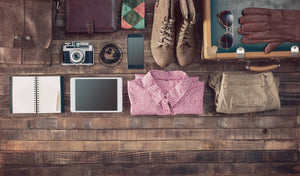
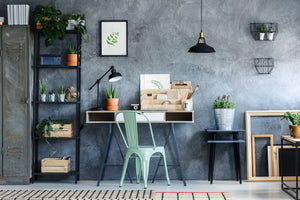
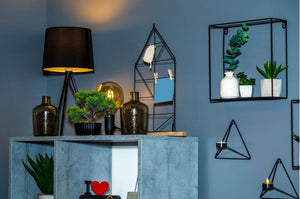

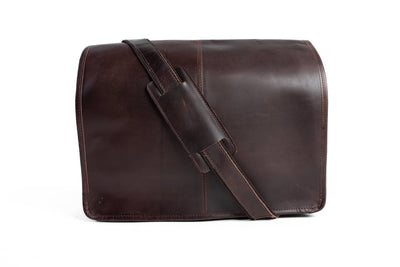
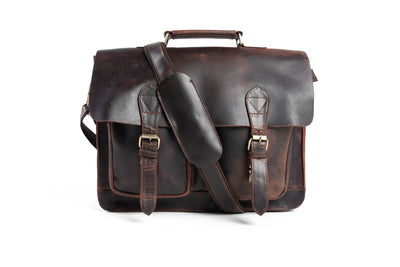

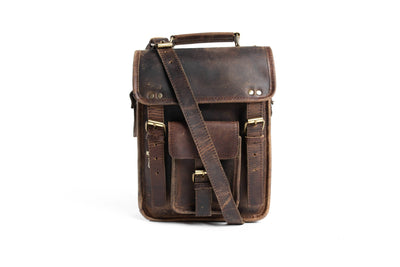
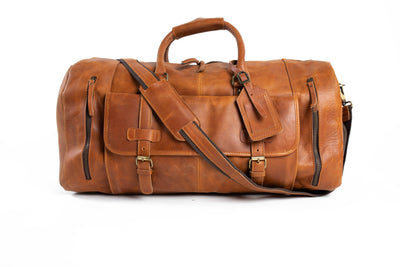
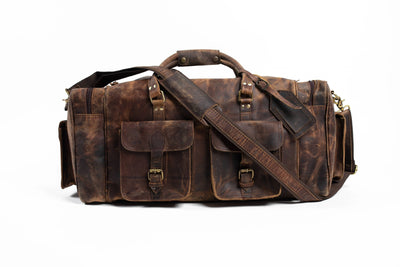
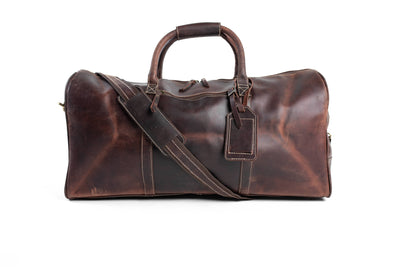
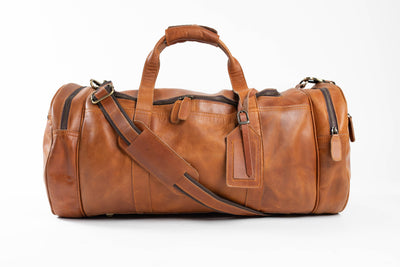
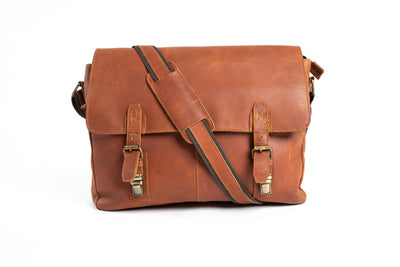
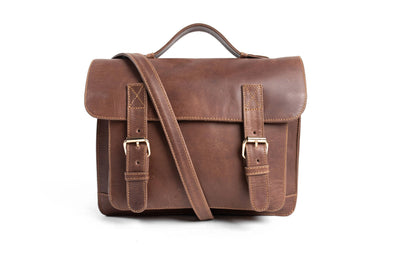
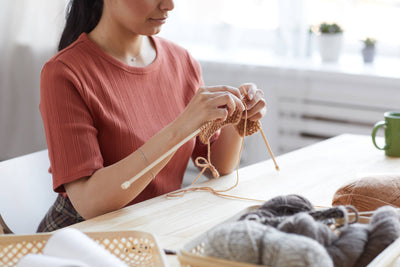
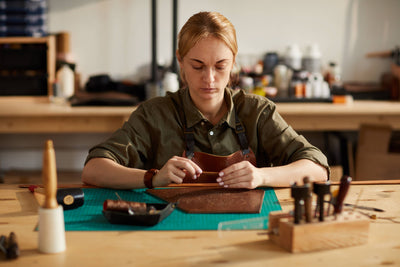
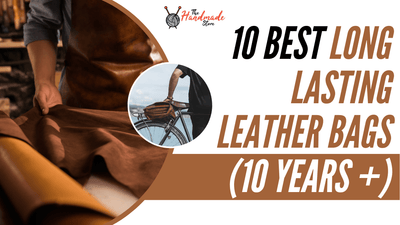
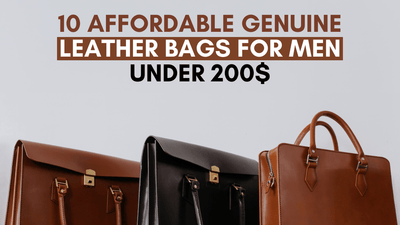
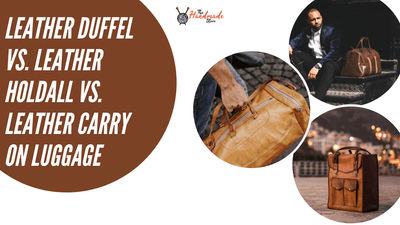
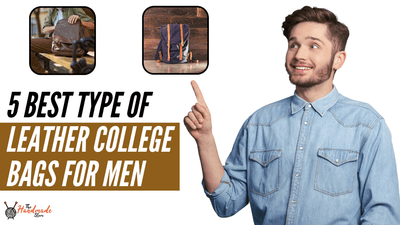

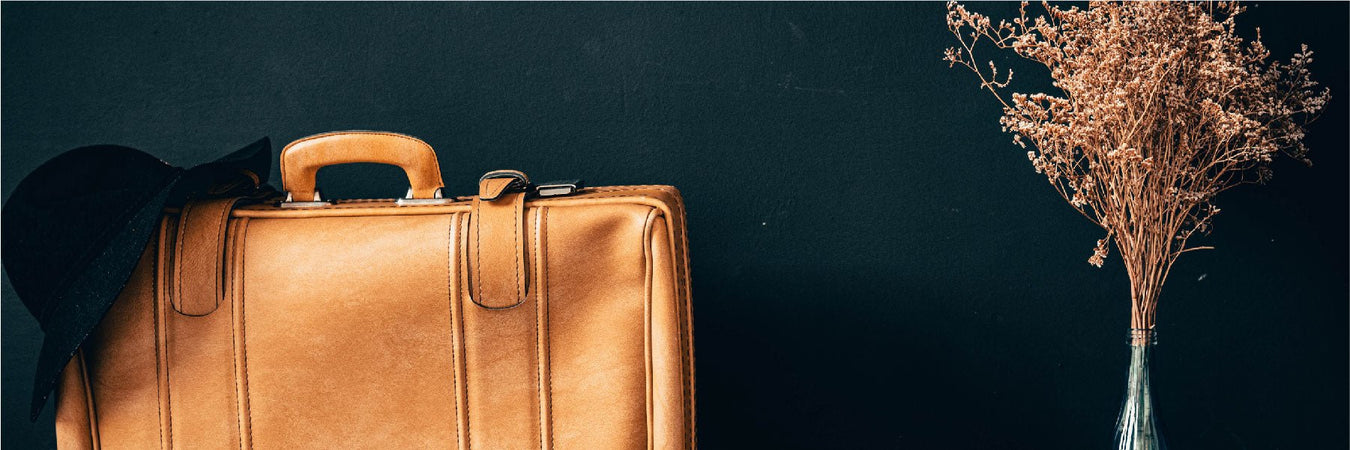
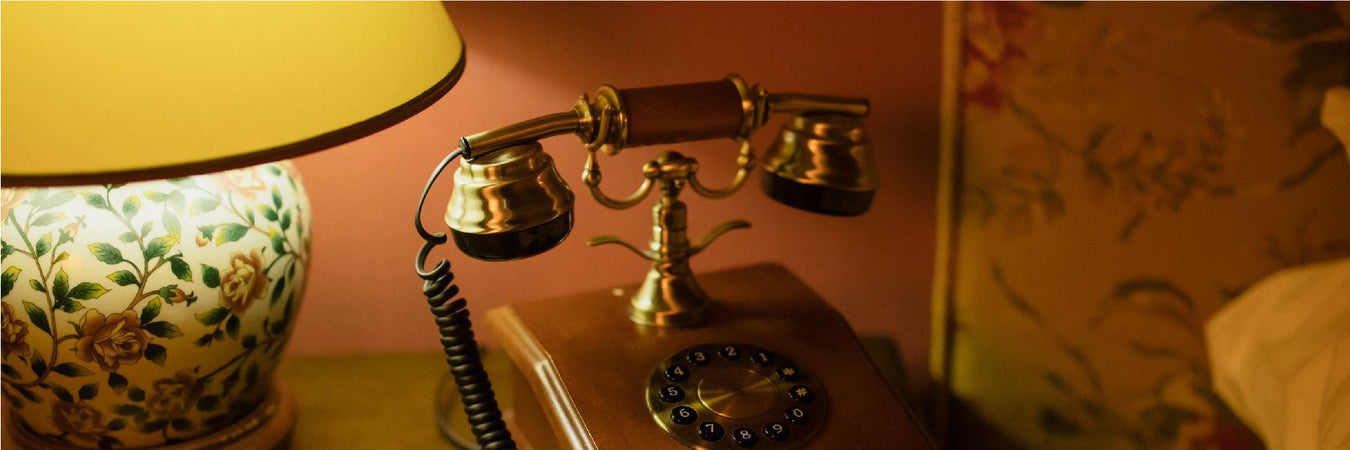

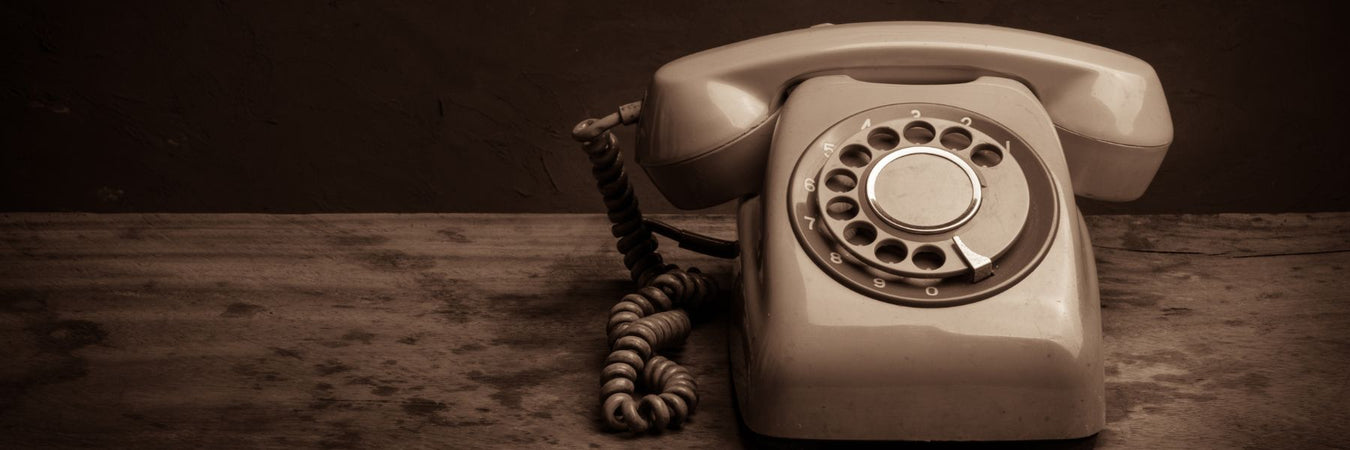
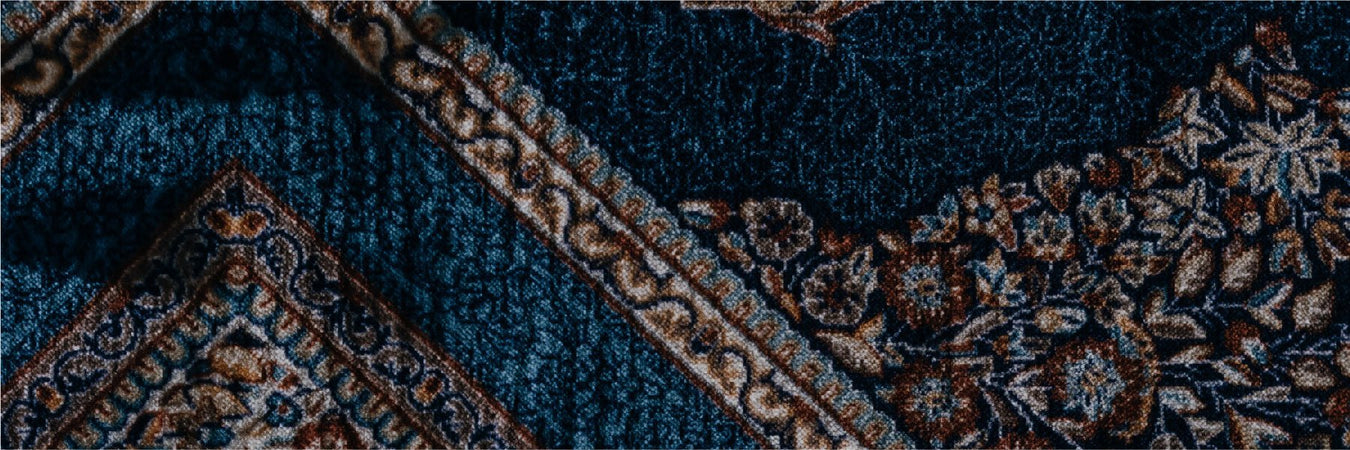
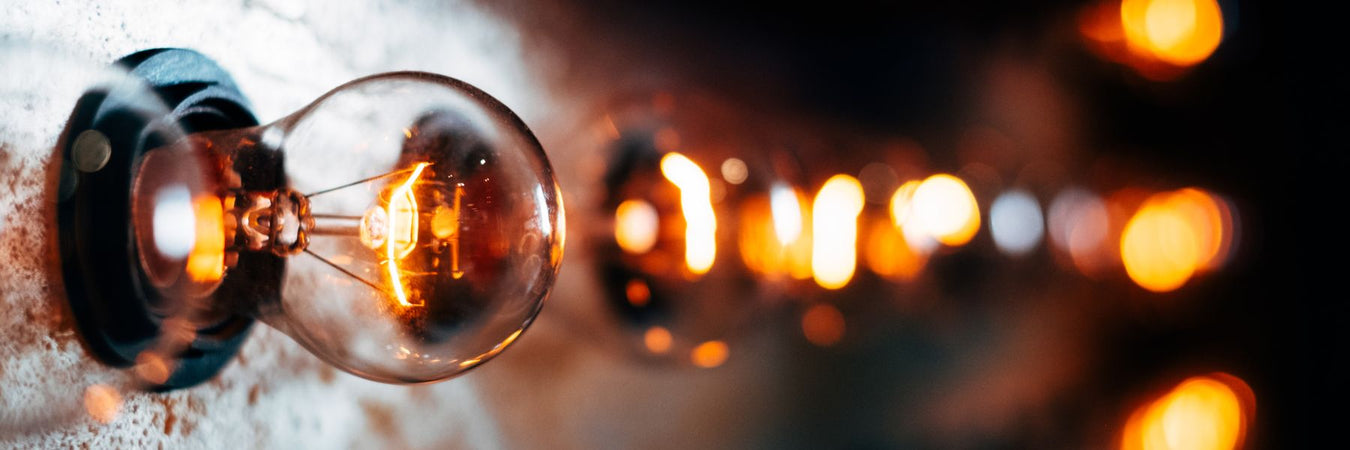
Leave a comment